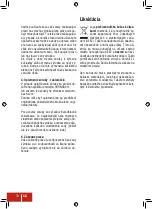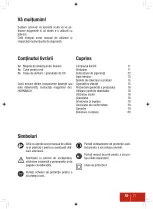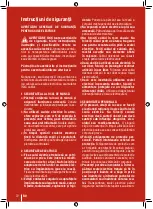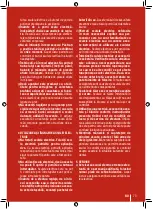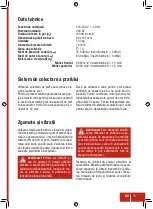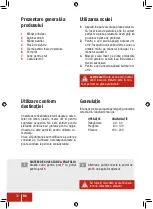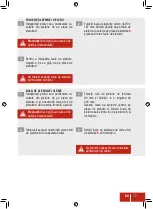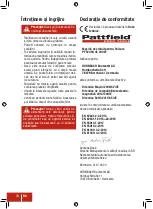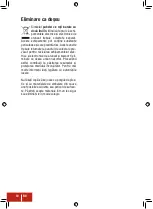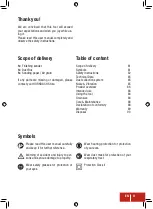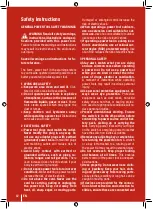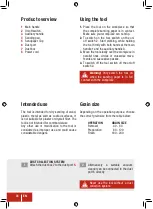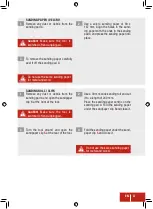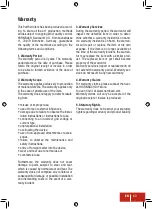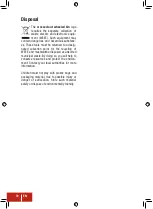
EN
83
properly used.
Use of dust collection can
reduce dust-related hazards.
h)
Do not let familiarity gained from fre
quent use of tools allow you to become
complacent and ignore tool safety prin
ciples.
A careless action can cause severe
injury within a fraction of a second.
4 POWER TOOL USE AND CARE
a)
Do not force the power tool. Use the cor
rect power tool for your application.
The
correct power tool will do the job better and
safer at the rate for which it was designed.
b)
Do not use the power tool if the switch
does not turn it on and off.
Any power tool
that cannot be controlled with the switch is
dangerous and must be repaired.
c)
Disconnect the plug from the power
source and/or the battery pack from the
power tool, if detachable, before making
any adjustments, changing accessories,
or storing power tools.
Such preventive
safety measures reduce the risk of starting
the power tool accidentally.
d)
Store idle power tools out of the reach
of children and do not allow persons
unfamiliar with the power tool or these
instructions to operate the power tool.
Power tools are dangerous in the hands of
untrained users.
e)
Maintain power tools and accessories.
Check for misalignment or binding of
moving parts, breakage of parts and
any other condition that may affect the
power tool’s operation. If damaged, have
the power tool repaired before use.
Many
accidents are caused by poorly maintained
power tools.
f)
Keep cutting tools sharp and clean.
Properly maintained cutting tools with sharp
cutting edges are less likely to bind and are
easier to control.
g)
Use the power tool, accessories and
tool bits etc. in accordance with these
instructions, taking into account the
working conditions and the work to be
performed.
Use of the power tool for op-
erations different from those intended could
result in a hazardous situation.
h)
Keep handles and grasping surfaces
dry, clean and free from oil and grease.
Slippery handles and grasping surfaces do
not allow for safe handling and control of
the tool in unexpected situations.
5 SERVICE
a)
Have your power tool serviced by a qual
ified repair person using only identical
replacement parts.
This will ensure that
the safety of the power tool is maintained.
MACHINE SPECIFIC SAFETY WARNINGS
FOR SANDERS
a)
Use the machine only for dry sanding.
Penetration of water into the machine in-
creases the risk of an electric shock.
b)
Pay attention that no persons are put
at risk through sparking. Remove any
combustible materials in the vicinity.
Sparking occurs when sanding metal ma-
terials.
c)
Caution, fire hazard! Avoid overheating
the object being sanded as well as the
sander. Always empty the collection
system before taking breaks.
In unfa-
vourable conditions, e.g., when sparks emit
from sanding metals, sanding debris in the
dust bag, micro filter or paper sack (or in the
filter sack or filter of the vacuum cleaner)
can self-ignite. Particularly when mixed
with remainders of varnish, poly-urethane
or other chemical materials and when the
sanding debris is hot after long periods of
working.
d)
When working with the machine, always
hold it firmly with both hands and pro
vide for a secure stance.
The power tool
is guided more secure with both hands.
e)
Secure the workpiece.
A workpiece
clamped with clamping devices or in a vice
is held more secure than by hand.
f)
Do not touch and/or inhale harmful/
toxic dust generated during sanding. All
persons in the vicinity of the work area
must wear appropriate personal protec
tive equipment for protection against
harmful/toxic dusts.
Use the dust extrac-


